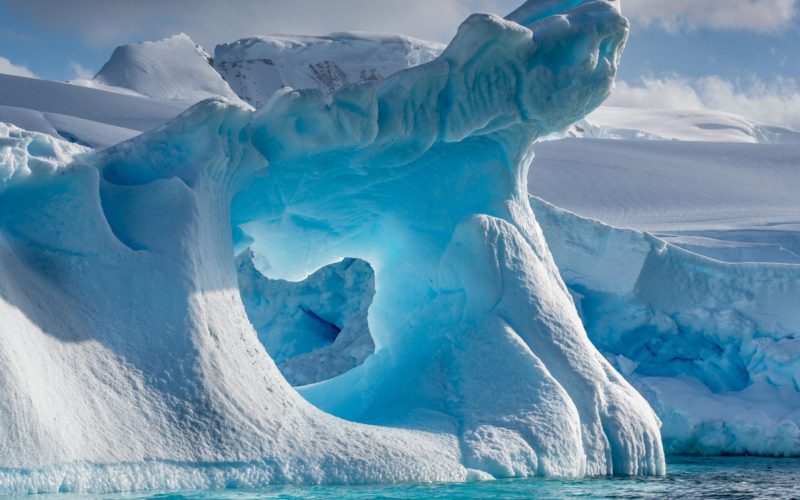Ever wonder what Earth’s climate was like way back when? We’re talking way before even grandparents were around! Scientists are pretty curious too, and they use some pretty cool tools to crack the code of ancient climates. One of those tools might surprise you: ice!
Think about it – ice sheets and glaciers are like giant freezers, slowly building up layer by layer over thousands of years. Each layer traps a tiny snapshot of what the Earth’s atmosphere was like at that time. So, by studying these layers, scientists can basically travel back in time and learn things like how much rain or snow fell, or even how hot or cold it was.
But how exactly do they do that – how do scientists use ice to study ancient climates? We’ll break down everything in easy-to-understand terms, from how scientists drill down into the ice to what kind of clues they’re looking for.
Table of contents
- Study of Ancient Climate
- About Past Climate
- The Significance of Ice in Studying Ancient Climates
- What Can You Get From Analyzing Ice Cores?
- How Ice Sheet Gives Information About the Ancient Atmosphere
- How Scientists Study Ancient Climate
- How Do Scientists Use Ice to Study Ancient Climates?
- FAQs – How Do Scientists Use Ice to Study Ancient Climates?
- Conclusion
- References
- Recommendations
Study of Ancient Climate
The study of ancient climate is a fascinating field investigating past climatic conditions on Earth. It encompasses various scientific disciplines, including paleoclimatology, glaciology, and geochemistry.
Scientists delve into diverse sources of evidence, such as ice cores, sediment cores, tree rings, and geological records, to reconstruct past climates that extend back thousands to millions of years.
By analyzing these archives, researchers can identify fluctuations in temperature, precipitation patterns, atmospheric composition, and even extreme events like ice ages and interglacial periods.
This multidisciplinary approach allows scientists to understand the complex interactions between the atmosphere, oceans, land, and ice, providing crucial insights into long-term climate trends and natural climate variability.
Moreover, studying ancient climates provides a historical context for assessing and predicting future climate change.
Read: How do I Become a Medical Research Scientist? With no Experience)
About Past Climate
Ice serves as a remarkable repository of information about past climates. By studying ice cores extracted from polar regions and glaciers, scientists can gain valuable insights into various aspects of ancient climate.
The composition of gases trapped within the ice, such as carbon dioxide and methane, provides important data about past atmospheric conditions. Isotopic analysis of the ice can reveal temperature fluctuations and changes in precipitation patterns.
The microscopic particles and chemical markers within the ice cores can indicate volcanic eruptions, forest fires, and human activities.
Additionally, the layers and structures of the ice cores offer a chronological record of climate events, allowing scientists to reconstruct long-term climate trends and identify periods of significant change, such as ice ages and warming periods.
Ice acts as a time capsule, preserving information that helps us understand the Earth’s climatic history and the factors driving it.
The Significance of Ice in Studying Ancient Climates
Ice plays a crucial role in studying ancient climates due to its unique properties and ability to preserve information. Ice acts as a time capsule, capturing and preserving evidence of past climatic conditions over thousands to millions of years.
Scientists gain access to a remarkable archive of climate records by extracting ice cores from polar regions and glaciers. The layers within the ice cores provide a chronological sequence of climate events, allowing researchers to reconstruct long-term climate trends and variability.
The composition of gases and isotopes trapped within the ice offers insights into atmospheric conditions, temperature changes, and Earth’s climate system dynamics. Ice also contains microorganisms, dust particles, and chemical markers that reveal details about past environments, volcanic eruptions, and human impacts.
Ice provides a tangible and invaluable source of evidence for understanding ancient climates and their connections to the present and future.
Also, read: How to Cite a Case Study in Your Paperwork in 2024
What Can You Get From Analyzing Ice Cores?
Analyzing ice cores yields a wealth of valuable information about past climates. By examining ice cores’ physical and chemical properties, scientists can uncover crucial insights into Earth’s climatic history.
Firstly, the layers within ice cores offer a chronological record, allowing researchers to determine the timing and duration of climate events. The composition of gases trapped in the ice reveals atmospheric conditions, including concentrations of greenhouse gases such as carbon dioxide and methane.
Isotopic analysis provides data on temperature variations and changes in precipitation patterns. Additionally, microscopic particles and chemical markers within ice cores provide evidence of volcanic eruptions, forest fires, industrial pollutants, and biological activity.
Collectively, these data enable scientists to reconstruct past climates, identify climate drivers, study natural climate variability, and assess the impacts of human activities on Earth’s climate system.
Also, read: Is Triple Science Hard? Is It Worth Taking GCSE Triple Science?
How Ice Sheet Gives Information About the Ancient Atmosphere
Ice sheets contain invaluable information about the ancient atmosphere. As snowfall accumulates and transforms into ice over time, it traps air bubbles within its layers. These air bubbles serve as time capsules, preserving samples of the ancient atmosphere.
By extracting ice cores from ice sheets, scientists can analyze the composition of these air bubbles, providing insights into past atmospheric conditions. The concentrations of greenhouse gases, such as carbon dioxide and methane, can be measured, revealing levels of atmospheric greenhouse gases in the past.
Isotopic analysis of oxygen and hydrogen isotopes in the ice can indicate past temperatures and changes in precipitation patterns. Studying trace elements and chemical markers within the ice cores further aids in understanding past atmospheric composition, including the presence of pollutants or volcanic emissions.
Through this analysis, ice sheets provide a direct and valuable window into the composition and dynamics of the ancient atmosphere.
How Scientists Study Ancient Climate
Scientists employ various methods to study ancient climates and reconstruct past climatic conditions. One of the primary approaches is the analysis of ice cores extracted from polar regions and glaciers. These cores provide information about past temperatures, atmospheric composition, and climate variability.
Another method involves examining sediment cores from lakes, oceans, and marine deposits containing records of past environmental changes and climate indicators. Tree rings offer insights into local climate conditions and can be used to create chronologies and detect long-term climate patterns.
Additionally, geological records, such as rock formations and fossils, provide evidence of past climates. Scientists also utilize proxy data, including isotopic analysis, pollen analysis, and historical documents, to further understand ancient climates.
By combining these methods, researchers comprehensively understand the Earth’s climatic history.
How Do Scientists Use Ice to Study Ancient Climates?
Scientists use ice as a valuable resource to study ancient climates through various methods and techniques. Here are several ways they utilize ice to gain insights into past climate conditions:
Ice Core Extraction
Scientists use specialized drilling techniques to extract ice cores from regions such as polar ice caps and glaciers. Typically several kilometers long, these cores preserve a vertical sequence of ice layers representing different periods. The process involves careful handling and preservation to prevent contamination and maintain the integrity of the ice cores.
Also, see: 10 Best Universities for Biomedical Sciences in the UK |
Isotopic Analysis
Isotopes are variants of elements with different numbers of neutrons. Scientists can infer past temperature variations by measuring the ratios of stable isotopes, such as oxygen-18 and hydrogen-2 (deuterium). Warmer conditions lead to higher isotopic ratios, while colder periods result in lower ratios. This analysis provides a quantitative estimate of past temperature changes.
Gas Analysis
The air trapped in ice cores contains small bubbles that serve as samples of ancient atmospheres. Scientists extract these bubbles and analyze their composition. Researchers can reconstruct past atmospheric conditions and assess the relationship between greenhouse gas levels and climate by measuring the concentrations of greenhouse gases like carbon dioxide and methane.
Chemical and Particle Analysis
Ice cores contain impurities, such as dust particles, volcanic ash, and chemical markers, which offer valuable information about past environmental conditions.
Analysis of these components allows scientists to identify volcanic eruptions, forest fires, industrial pollution, and even biological activity in specific periods. Certain elements or compounds provide insights into local or regional environmental changes.
Dating Techniques
Scientists employ various dating methods to establish accurate chronologies for ice cores. They can count annual layers by examining visible changes in ice properties or use ice flow models to estimate the time it takes for ice to accumulate over a certain depth.
Radioisotope datings, such as using radioactive isotopes of beryllium or chlorine, help determine the age of deeper ice layers.
Paleoclimate Modeling
Ice core data and other climate proxies are used to develop sophisticated computer models that simulate past climates. These models integrate physical processes related to the atmosphere, ocean, land, and ice to understand past climate dynamics.
Comparing model simulations with observed ice core data helps validate and refine the models, enabling better predictions of future climate scenarios.
Read Also: 10 Best Universities for Biomedical Sciences in the UK |
Calibration with Other Proxies
Ice core records are often correlated and calibrated with data from other climate proxies. For example, tree rings, sediment cores, and historical documents provide complementary information about past climate conditions. This multidisciplinary approach enhances the accuracy and reliability of paleoclimate reconstructions.
By combining these methods, scientists can reconstruct highly detailed records of past climates, including temperature changes, atmospheric composition, and environmental conditions.
These records contribute to our understanding of natural climate variability and human activities’ influence on the climate system and improve projections of future climate change.
FAQs – How Do Scientists Use Ice to Study Ancient Climates?
Scientists use specialized drilling equipment, such as ice core drills, to extract cylindrical ice cores from polar ice caps and glaciers. These drills can penetrate several kilometers into the ice, capturing a continuous record of ancient climate.
Scientists determine the age of ice cores through various dating techniques. They count annual layers visible in the ice, use ice flow models to estimate the time it takes for ice to accumulate, and utilize radioisotope dating methods to measure isotopes with known decay rates.
Ice core data is used to validate and refine climate models. By comparing model simulations with observed ice core data, scientists can assess the accuracy of the models in reproducing past climate conditions and improve their ability to project future climate scenarios.
Conclusion
Studying ancient climates using ice cores is a powerful tool that enables scientists to unlock the secrets of Earth’s climatic history. Through careful analysis of ice cores, researchers can reconstruct past temperatures, atmospheric compositions, and environmental conditions, enhancing our understanding of natural climate variability and informing projections of future climate change. The invaluable information preserved in ice continues to contribute to our knowledge of the Earth’s dynamic climate system.
References
- nsidc.org – What do ice cores reveal about the past?
- greenmatter.com – How Scientists Use Ice to Study Ancient Climates and Why It Matters
- americangeoscience.org – How do scientists use ice cores to determine past climates?
- brainly.in – How do scientists use ice to study ancient climates?
- boycottcop28.org – How Do Scientists Use Ice To Study Ancient Climates?






